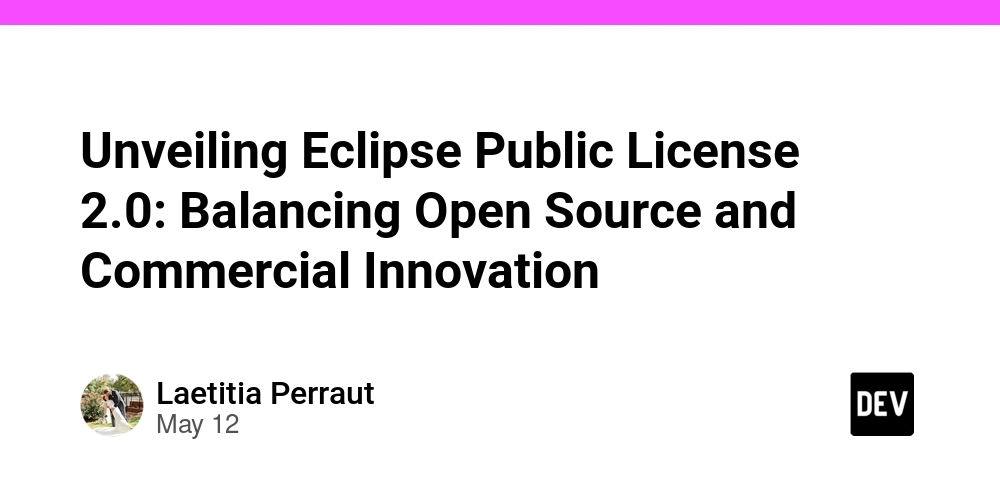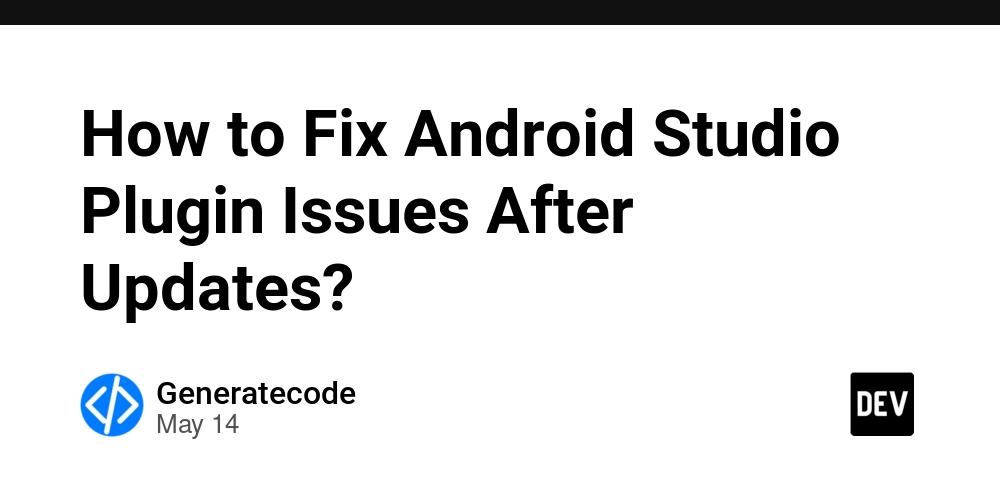Unveiling Eclipse Public License 2.0: Balancing Open Source and Commercial Innovation
Abstract: This post provides a holistic exploration of the Eclipse Public License 2.0 (EPL 2.0), tracing its history, core features, applications, and challenges. We examine how EPL 2.0 strikes a balance between open source ideals and commercial exploitation, discuss the dual licensing model, and compare it with other popular licenses. With deep domain knowledge and technical insights, this guide offers developers, legal advisors, and project maintainers a comprehensive overview of EPL 2.0’s role in the evolving open source ecosystem. Introduction The world of open source is evolving rapidly. Developers and enterprises alike are striving to balance community collaboration with commercial needs. One license that has consistently stood at the forefront of this discussion is the Eclipse Public License 2.0 (EPL 2.0). In today’s post, we will unpack the intricacies of EPL 2.0, discuss its significance in both open source and fair code environments, and explore its implications for sustainable software development. EPL 2.0 is known for its balanced approach, enabling contributors to share code while permitting commercial exploitation under clear terms. This balance is key as it protects both the creativity of the coding community and the commercial interests of businesses leveraging open source technology. For a detailed article on EPL 2.0, please refer to the Original Article. Background and Context EPL 2.0 emerged from the need to address ambiguities in earlier licensing frameworks. Developed by the Eclipse Foundation, EPL 2.0 builds on years of community input, legal insights, and feedback from software industry experts. Its evolution from EPL 1.0 to EPL 2.0 was driven by the desire to: Clarify terms for derivative works. Ensure modifications remain open. Provide robust legal protection against patent litigation. Historically, as open source projects grew in complexity, the need for a license that could reconcile academic research, volunteer-driven projects, and commercial initiatives became more pressing. EPL 2.0 achieved this by maintaining transparent contribution guidelines and offering a flexible dual licensing arrangement. Today, it is widely adopted in projects like the Eclipse IDE, middleware platforms, and enterprise-level applications. The ecosystem around open source licensing further benefits from parallel discussions on platforms such as Stack Overflow and Hacker News, where developers debate the merits of various licenses—including EPL 2.0, the MIT License, and Apache License 2.0. These discussions illustrate the ongoing need for clear, enforceable licensing models in today’s dynamic tech landscape. Core Concepts and Features EPL 2.0 brings several key features to the table, and understanding these is crucial to appreciating its balanced nature: Legal Robustness and Flexibility Legal Robustness: EPL 2.0 is carefully crafted to endure legal scrutiny across jurisdictions. Its clear provisions on patent rights and modifications help minimize litigation risks. Flexibility for Commercial Use: Companies can build proprietary plug-ins or extensions around EPL 2.0–licensed projects, provided that any modifications to the original code are shared openly. Balanced Copyleft: Unlike strict copyleft licenses like GNU GPL v3, EPL 2.0 mandates openness for modifications but preserves sufficient freedom for commercial adaptations. Dual Licensing Support One of the most compelling aspects of EPL 2.0 is its support for dual licensing. Dual licensing allows a project to be released under two different sets of licensing terms—one arranged for open source collaboration and another tailored for commercial exploitation. Although this process requires diligent legal oversight, it opens the path to innovative funding models and revenue-sharing mechanisms that benefit both individual developers and enterprises. Community and Contribution EPL 2.0 emphasizes transparency and collaboration. The Eclipse Foundation, which maintains the license, ensures regular updates and community engagement. This continuous dialogue helps refine the license in response to the evolving technological and legal landscape. As a result, EPL 2.0 not only facilitates legal protection but also promotes an ecosystem where developers are empowered to contribute and innovate freely. Table: Comparison of Key Licensing Models License Legal Protection Commercial Flexibility Copyleft Nature Community Impact Eclipse Public License 2.0 High – designed for global use Moderate – supports plug-in models Moderate – requires derivative disclosure Strong – maintained by Eclipse Foundation MIT License Moderate – very permissive Very High – minimal restrictions Very Permissive – no strong copyleft High – widely adopted for rapid innovation Apache License 2.0 High – includes patent grants High – widely used commercially Permissive with conditions on pate

Abstract:
This post provides a holistic exploration of the Eclipse Public License 2.0 (EPL 2.0), tracing its history, core features, applications, and challenges. We examine how EPL 2.0 strikes a balance between open source ideals and commercial exploitation, discuss the dual licensing model, and compare it with other popular licenses. With deep domain knowledge and technical insights, this guide offers developers, legal advisors, and project maintainers a comprehensive overview of EPL 2.0’s role in the evolving open source ecosystem.
Introduction
The world of open source is evolving rapidly. Developers and enterprises alike are striving to balance community collaboration with commercial needs. One license that has consistently stood at the forefront of this discussion is the Eclipse Public License 2.0 (EPL 2.0). In today’s post, we will unpack the intricacies of EPL 2.0, discuss its significance in both open source and fair code environments, and explore its implications for sustainable software development.
EPL 2.0 is known for its balanced approach, enabling contributors to share code while permitting commercial exploitation under clear terms. This balance is key as it protects both the creativity of the coding community and the commercial interests of businesses leveraging open source technology. For a detailed article on EPL 2.0, please refer to the Original Article.
Background and Context
EPL 2.0 emerged from the need to address ambiguities in earlier licensing frameworks. Developed by the Eclipse Foundation, EPL 2.0 builds on years of community input, legal insights, and feedback from software industry experts. Its evolution from EPL 1.0 to EPL 2.0 was driven by the desire to:
- Clarify terms for derivative works.
- Ensure modifications remain open.
- Provide robust legal protection against patent litigation.
Historically, as open source projects grew in complexity, the need for a license that could reconcile academic research, volunteer-driven projects, and commercial initiatives became more pressing. EPL 2.0 achieved this by maintaining transparent contribution guidelines and offering a flexible dual licensing arrangement. Today, it is widely adopted in projects like the Eclipse IDE, middleware platforms, and enterprise-level applications.
The ecosystem around open source licensing further benefits from parallel discussions on platforms such as Stack Overflow and Hacker News, where developers debate the merits of various licenses—including EPL 2.0, the MIT License, and Apache License 2.0. These discussions illustrate the ongoing need for clear, enforceable licensing models in today’s dynamic tech landscape.
Core Concepts and Features
EPL 2.0 brings several key features to the table, and understanding these is crucial to appreciating its balanced nature:
Legal Robustness and Flexibility
- Legal Robustness: EPL 2.0 is carefully crafted to endure legal scrutiny across jurisdictions. Its clear provisions on patent rights and modifications help minimize litigation risks.
- Flexibility for Commercial Use: Companies can build proprietary plug-ins or extensions around EPL 2.0–licensed projects, provided that any modifications to the original code are shared openly.
- Balanced Copyleft: Unlike strict copyleft licenses like GNU GPL v3, EPL 2.0 mandates openness for modifications but preserves sufficient freedom for commercial adaptations.
Dual Licensing Support
One of the most compelling aspects of EPL 2.0 is its support for dual licensing. Dual licensing allows a project to be released under two different sets of licensing terms—one arranged for open source collaboration and another tailored for commercial exploitation. Although this process requires diligent legal oversight, it opens the path to innovative funding models and revenue-sharing mechanisms that benefit both individual developers and enterprises.
Community and Contribution
EPL 2.0 emphasizes transparency and collaboration. The Eclipse Foundation, which maintains the license, ensures regular updates and community engagement. This continuous dialogue helps refine the license in response to the evolving technological and legal landscape. As a result, EPL 2.0 not only facilitates legal protection but also promotes an ecosystem where developers are empowered to contribute and innovate freely.
Table: Comparison of Key Licensing Models
| License | Legal Protection | Commercial Flexibility | Copyleft Nature | Community Impact |
|---|---|---|---|---|
| Eclipse Public License 2.0 | High – designed for global use | Moderate – supports plug-in models | Moderate – requires derivative disclosure | Strong – maintained by Eclipse Foundation |
| MIT License | Moderate – very permissive | Very High – minimal restrictions | Very Permissive – no strong copyleft | High – widely adopted for rapid innovation |
| Apache License 2.0 | High – includes patent grants | High – widely used commercially | Permissive with conditions on patents | High – standard in many commercial projects |
| GNU GPL v3 | Very High – strict viral terms | Low – extensive copyleft rules | Strict – modifications must remain open | Strong – protects free software principles |
Note: This table is a simplified overview. For more detailed insights, explore the analysis on GitHub License Usage.
Bullet List: Key Benefits of EPL 2.0
- Balanced legal framework protecting both developers and commercial entities.
- Dual licensing support that allows projects to have both open source and commercial streams.
- Moderate copyleft, ensuring enhancements are shared without hampering proprietary development.
- Clear guidelines on modification and distribution that uphold transparency and community growth.
Applications and Use Cases
EPL 2.0 has been widely adopted in a variety of sectors. Here are a few practical examples:
Eclipse IDE
As one of the flagship open source projects under EPL 2.0, the Eclipse IDE serves as a primary development tool in many software development environments. The license’s balanced approach permits third-party plug-ins while enforcing openness in the core software, fostering innovation and collaboration.
Middleware and Enterprise Applications
Industries such as cloud computing and embedded systems require robust and legally reliable frameworks. Many middleware platforms have adopted EPL 2.0 because its clear guidelines allow for commercial extensions without fear of inadvertent violations. For instance, enterprises utilizing hybrid software stacks appreciate the clarity provided on derivative works and patent rights.
Emerging Blockchain and Open Source Funding
Recent trends indicate a growing convergence between open source licensing and blockchain technology. Projects exploring alternative funding models, such as those based on the Open Compensation Token License (OCTL), are examining how blockchain can ensure immutable records of contributions and revenue sharing. While EPL 2.0 does not natively integrate blockchain features, its balanced approach makes it a strong candidate for projects seeking to blend traditional open source licensing with innovative funding streams.
Challenges and Limitations
Despite its many benefits, EPL 2.0 is not without its challenges. Several technical and adoption-related issues have been raised:
Legal Ambiguities in Derivative Works
Some developers argue that the clauses regarding derivative works are open to interpretation, particularly in multinational projects. This can cause uncertainty when merging code from different ecosystems. Clear documentation and ongoing community discussions – for example on platforms like Stack Overflow – continue to shape the evolution of EPL 2.0.
Enforcement and Compliance
Monitoring compliance across diverse projects can be demanding. Ensuring that all modifications are disclosed correctly poses an ongoing challenge that sometimes leads to disputes, especially in cases of anonymous contributions without proper Contributor License Agreements (CLAs). The Eclipse Foundation and legal experts continue to refine guidance to address these concerns.
Integration with Other Licenses
EPL 2.0 may face compatibility issues when combined with other open source or fair code licenses. Integrating code licensed under EPL 2.0 with that governed by more permissive licenses (such as the MIT License) or stricter ones (such as GNU GPL v3) requires careful legal scrutiny to avoid conflicts. This challenge remains a subject of robust debate within the community.
Dual Licensing Complexities
While dual licensing offers significant advantages, implementing such a model can be legally complex. There is a risk that companies may fork the project for commercial gain without adequately compensating the original contributors. This potential for exploitation has sparked important discussions in various forums, prompting best practice guidelines for future projects.
Future Outlook and Innovations
Looking ahead, several trends and innovations are poised to influence the future of open source licensing and the evolution of EPL 2.0:
Evolving Legal Frameworks
Continuous legal revisions will further refine EPL 2.0 to address ambiguities, especially as software development becomes more global and complex. Enhanced clarity on derivative works and improved international legal compatibility are among the expected developments.
Integration with Blockchain Technology
While EPL 2.0 itself is not blockchain-based, the idea of integrating immutable records for tracking contributions is gaining traction. Innovative funding models, such as those discussed in Empowering Open Source: The License Token Revolution, may influence future iterations of open source licenses, blending the best of traditional legal frameworks with blockchain’s transparency.
Increased Community-Driven Governance
As open source projects grow, community involvement is becoming even more crucial. The Eclipse Foundation’s proactive stance in engaging developers through forums and social media – such as their Twitter account (@EclipseFdn) – is likely to inspire more comprehensive governance models. These models can empower developers and ensure that evolving legal frameworks continue to reflect the needs of the community.
Funding Models and Developer Compensation
The debate over how to fairly compensate developers is ongoing. New licensing models like the Open Compensation Token License (OCTL) and discussions in communities on Dev.to point to a future where revenue-sharing and tokenized contributions may be integrated into traditional licenses. This evolving trend holds promise for creating a more sustainable funding mechanism for open source projects without compromising the ethos of community sharing.
Enhancing Interoperability
Finally, as software stacks become increasingly hybrid, the need for interoperable licensing models grows. Future iterations of EPL 2.0 and related licenses will likely continue to focus on ensuring compatibility across diverse software ecosystems. This will be especially important in contexts where dual licensing and multiple licensing models coexist within a single project.
Summary
In summary, the Eclipse Public License 2.0 represents a critical milestone in the history of open source licensing. It has evolved to balance the need for open collaboration with the increasingly complex demands of commercial software development. Through its robust legal framework, dual licensing support, and moderate copyleft provisions, EPL 2.0 has enabled projects such as the Eclipse IDE, middleware applications, and emerging blockchain initiatives to thrive.
While challenges remain—particularly regarding legal ambiguities, compliance, and integration with other licenses—the ongoing evolution of EPL 2.0 is a testament to the community’s commitment to refining open source principles. As the digital landscape continues to expand and innovate, we can expect further improvements, including potential integrations with blockchain for improved transparency and new funding models that better reward developer contributions.
For anyone interested in a deeper dive into EPL 2.0 and related licensing models, the Original Article on EPL 2.0 is an excellent resource. In addition, you may find insights in posts such as Exploring the CUA Office Public License 1.0 and other discussions on Dev.to that tackle open source funding and licensing innovations.
In essence, EPL 2.0 serves as a beacon for how open source licensing can evolve to support both technological innovation and fair commercial practices. Its balanced approach not only safeguards intellectual property but also spurs community contributions—a synergy that is vital for the future of software development.
Key Takeaways
- Eclipse Public License 2.0 balances strict legal protections with commercial flexibility.
- Dual licensing allows projects to leverage both open source and proprietary models.
- Ongoing legal refinements and potential blockchain integrations promise a brighter, more transparent future for open source funding.
- Community engagement and evolving best practices remain at the forefront of improving licensing sustainability.
By understanding these core principles and embracing innovative funding models, developers and companies can continue to push the boundaries of open source collaboration and drive sustainable software innovation.
Keywords: EPL 2.0, open source licensing, fair code, dual licensing, Eclipse Foundation, software innovation, community contribution, blockchain, open source funding.
For further reading on similar topics, check out these related posts:
- Empowering Open Source: The License Token Revolution
- Exploring the Delicate Balance of Fair Code
- Navigating Open Source Compliance
By staying informed and engaged with evolving licensing models, you too can contribute to a future where open source thrives in tandem with commercial innovation.














































































































































































![[The AI Show Episode 156]: AI Answers - Data Privacy, AI Roadmaps, Regulated Industries, Selling AI to the C-Suite & Change Management](https://www.marketingaiinstitute.com/hubfs/ep%20156%20cover.png)
![[The AI Show Episode 155]: The New Jobs AI Will Create, Amazon CEO: AI Will Cut Jobs, Your Brain on ChatGPT, Possible OpenAI-Microsoft Breakup & Veo 3 IP Issues](https://www.marketingaiinstitute.com/hubfs/ep%20155%20cover.png)












































































































































































































































.jpg?width=1920&height=1920&fit=bounds&quality=70&format=jpg&auto=webp#)

























_Michael_Burrell_Alamy.jpg?width=1280&auto=webp&quality=80&disable=upscale#)



























































































![Senators reintroduce App Store bill to rein in ‘gatekeeper power in the app economy’ [U]](https://i0.wp.com/9to5mac.com/wp-content/uploads/sites/6/2025/06/app-store-senate.jpg?resize=1200%2C628&quality=82&strip=all&ssl=1)



























































































